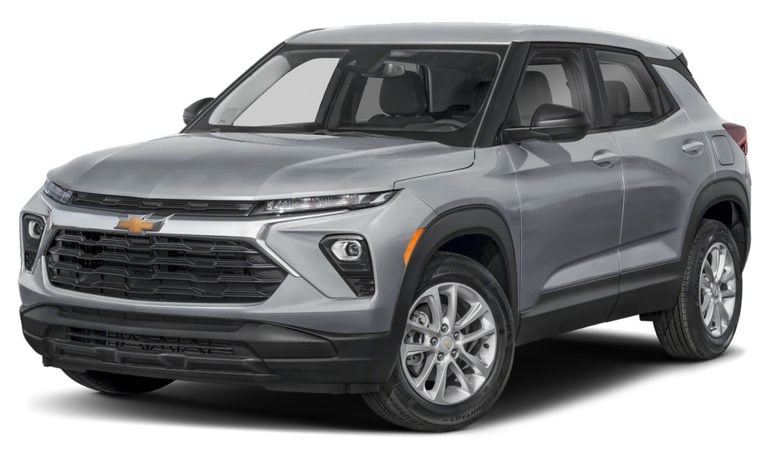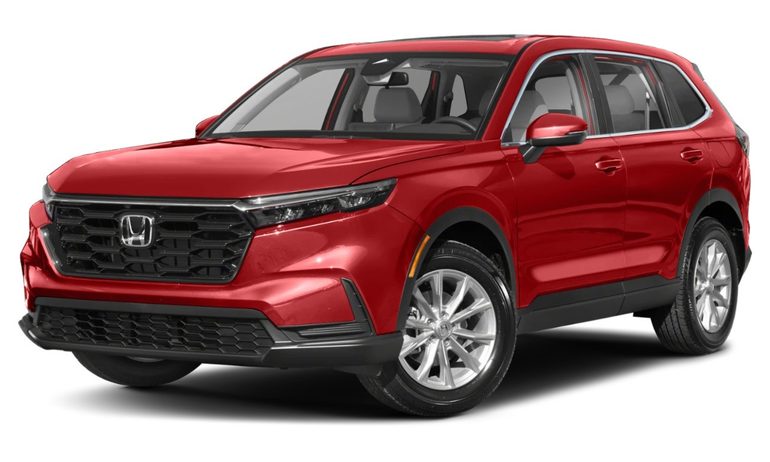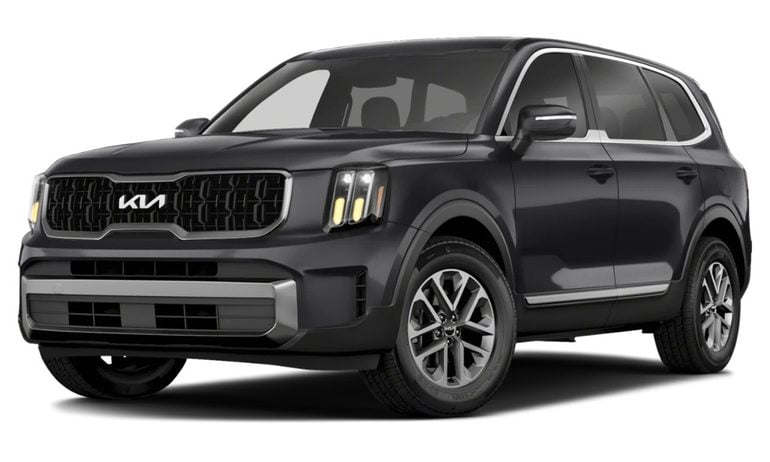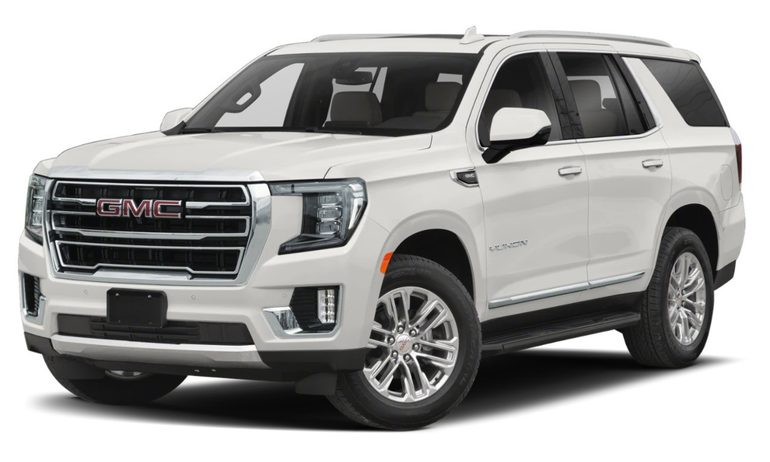[ad_1]
Let’s start with the most basic question: What does SUV stand for? SUV is an acronym for “sport utility vehicle” and was first used in 1974 for Jeep Cherokee advertising. In the 1980s, the term expanded to describe vehicles with off-road capabilities and large cargo areas, and today it refers to the most popular, and growing, class of vehicles in a very wide range of sizes and capabilities.
According to Cox Automotive, 15.5 million SUVs were purchased in the U.S. in 2023, which was 56.9% of all vehicle sales. That’s compared to 13.8 million in 2022, when there was a vehicle shortage. Through August 2024, SUV sales reached 10.5 million or 58.4% of vehicle sales.
The preference for SUVs can be explained by the combination of benefits they offer — such as extra passenger and cargo space, versatility for commuting and off-road use, typically high safety ratings and hauling/towing capability. Whatever your reasons for wanting an SUV, here’s what to consider when SUV shopping.
What are the different types of SUVs?
All SUVs have two things in common: Their cargo area is in the cabin instead of a separate trunk, and the seating position is higher than in most cars. However, from there, you’ll find many differences. Some are built for rugged terrain and off-roading, while others are for daily commuting and hauls. SUVs come in all sizes and can range from an MSRP starting in the low $20,000s to luxury models well over $100,000.
SUVs are categorized by size, and understanding these categories can provide a high-level starting point when deciding which kind of SUV best suits your needs. Here’s a breakdown of the different SUV types.
Subcompact SUVs

Chevrolet Trailblazer
Subcompact SUVs are the smallest and are sometimes called extra-small SUVs. Vehicles considered to be subcompact aren’t defined by specific dimensions, but most have limited seating and cargo space. When compared to a small car, subcompact SUVs tend to be slightly taller and offer more space.
-
Pros: Easy to maneuver and park, usually more affordable, fuel-efficient, car-like driving.
-
Cons: Limited cargo area, small back seat, minimal towing capacity, not for off-road use.
-
Best for: City commuters, singles and couples.
-
Typical price range: Low $20,000s to high $30,000s. Some luxury models are $50,000 or more.
-
Fuel efficiency: Average 28 mpg city/highway combined, with some above 30 mpg.
-
Popular models: Chevrolet Trailblazer, Honda HR-V, Hyundai Venue, Subaru Crosstrek.
-
Drivetrain: Commonly front-wheel drive (FWD), with all-wheel drive (AWD) as an option. Some are standard AWD.
Compact SUVs

Honda CR-V
Also called small SUVs, compact SUVs are among the most popular vehicles in the U.S. Larger than subcompacts, compact SUVs have more cargo and interior space, while still being fuel-efficient and easy to drive.
-
Pros: Unibody frame for car-like agility, more cargo space than subcompacts or sedans, fuel efficient, usually more standard features and optional upgrades than subcompacts.
-
Cons: No or very limited off-roading capabilities, not built for towing large items, back-seat space may be cramped for three adults.
-
Best for: Families with young children, city and suburban drivers.
-
Typical price range: High $20,000s to high $30,000s. Luxury models can surpass $60,000.
-
Fuel efficiency: Average 28 mpg city/highway combined, with some above 30 mpg.
-
Popular models: Honda CR-V, Toyota RAV4, Kia Sportage, Nissan Rogue, Chevrolet Trax.
-
Drivetrain: FWD or AWD standard, with AWD available for nearly every model.
Midsize SUVs

Kia Telluride
Midsize SUVs provide the best balance of horsepower, cargo room and passenger space. They come with two- or three-row seat variations, although third rows can be cramped for adults. Some midsize SUVs are designed for a more car-like ride, while others are built specifically for heavy off-road use and towing.
-
Pros: Plenty of cargo and passenger space, more powerful engines than subcompact or compact SUVs, often come with many standard safety features.
-
Cons: Lower fuel economy, not as easy to maneuver due to size, higher MSRP.
-
Best for: Larger families, drivers wanting more passenger and cargo space, those needing a greater towing capacity.
-
Typical price range: Mid-$30,000s to over $50,000 for three-row models. Luxury models can surpass $60,000.
-
Fuel efficiency: Average 22 mpg city/highway combined, with some at or above 25 mpg.
-
Popular models: Jeep Grand Cherokee, Subaru Outback, Honda Pilot, Ford Explorer, Toyota Highlander.
-
Drivetrain: A wide range of standard and available options: FWD, AWD, rear-wheel drive (RWD) and four-wheel drive (4WD).
Full-size SUVs

GMC Yukon
Also referred to as large SUVs, full-size SUVs are in a category with the fewest vehicles available, which could be related to their high price tag and poor fuel economy. But these SUVs meet some very specific needs. Built more like trucks, they’re powerful, rugged and able to haul and tow heavy loads, while providing maximum interior space.
-
Pros: Maximum cargo and passenger space, powerful engine options, excellent towing capacity, can be equipped for heavy off-roading.
-
Cons: Poor fuel economy, difficult to maneuver and park due to size, higher floor can make entry difficult, highest MSRP.
-
Best for: Drivers needing to tow a trailer, transport many people or haul a lot of equipment.
-
Typical price range: High $40,000s to more than $100,000 for luxury models.
-
Fuel efficiency: Average 20 mpg city/highway combined, with some at or above 23 mpg.
-
Popular models: Chevrolet Tahoe, Ford Expedition, GMC Yukon, Jeep Wagoneer.
-
Drivetrain: Mainly AWD and 4WD, with some FWD and RWD.
Within each SUV category, you’ll find a range of vehicles — base models at a lower price point, more expensive luxury models with premium features and faster, high-performance models. You’ll have to choose between gas-powered, electric, hybrid and plug-in hybrid SUVs. There’s also the decision of whether to go with a crossover SUV, and the term “crossover” can cause confusion.
What is a crossover SUV?
You’re likely to hear or see vehicles labeled as crossover SUVs or CUVs. But it isn’t always easy to differentiate a crossover from all other SUVs. That’s because the definition of crossover has blurred since the term originated in the 1990s.
Originally, the term crossover was developed to describe vehicles that blended passenger car features with SUV functionality and appearance. Crossovers are built on a car platform, called a unibody frame, making them lighter with more car-like handling. In comparison, traditional SUVs are constructed with a body-on-frame design used for pickup trucks, making them heavier and more durable.
The original crossover-versus-SUV definition still applies, and some SUVs referred to as crossovers today don’t technically fit crossover criteria.
What to consider when choosing an SUV
Even when two SUVs have a similar look, a thorough comparison can reveal many differences. Here are aspects to consider and questions to ask when deciding on the make and model that’s right for you.
Seating capacity: How many passengers will you regularly transport? This can make the difference in whether you need a two-row or three-row SUV. Smaller SUVs (compact or subcompact) are more maneuverable but might not offer as much seating space as midsize or full-size SUVs. A few large SUVs can seat up to nine people.
Cargo space: Do you regularly carry a lot of sports gear, camping equipment or large items? If so, when comparing SUVs, pay attention to the cargo area behind the second row of seats — and third row if the vehicle has one. Also, consider the flexibility of each SUV’s cargo configurations. For example, do the seats easily fold flat for larger loads?
Fuel economy: What is the SUV’s fuel economy rating — mpg for gas and MPGe for electric vehicles — and how does it compare to similar vehicles? The U.S. Environmental Protection Agency (EPA) determines the mpg and MPGe rating for specific makes and models of cars, based on the car manufacturer’s self-reporting and EPA testing. Ratings are provided for three types of driving: city, highway and combined (an average of city and highway). You can find this information at fueleconomy.gov, on new vehicle window stickers, manufacturer websites and online car retailer sites.
Towing and hauling: If you plan to tow, determine which SUVs have the towing capacity and hitch class to handle the load you intend to pull. Within each SUV category, you’ll find a range of towing capacities. On the high end, full-size SUVs can tow 8,000 pounds or more, which would be enough for a large boat. Some mid-size SUVs can tow up to 6,000 pounds, which would haul a small boat or camper. You’ll also want to find out what towing-specific features — like trailer sway control and tow/haul mode — come standard. Some SUVs require an optional tow package to reach the maximum towing capacity.
Engine and power: Are you looking to save on gas, to tow a lot, or to find the best balance of both? When you know the answer to that question, you’ll want to think about engine type and horsepower. Engines with fewer cylinders tend to be more efficient, while those with more cylinders deliver more power. This is why subcompact and compact SUVs with four- or six-cylinder engines boast better fuel economy ratings, whereas midsize or full-size SUVs with six- or eight-cylinder engines flex more horsepower. Whether an engine is turbocharged or uses direct injection matters, too, but generally that’s the rule.
FWD, RWD, AWD or 4WD: If you don’t already know, you’ll want to learn about the differences between front-wheel drive, rear-wheel drive, all-wheel drive and four-wheel drive, and how each affects a vehicle’s purchase price, fuel efficiency, traction in bad weather and ability to handle rugged off-road terrain. If you won’t be traveling steep, rocky hills, and want a vehicle with a lower price tag and better fuel economy, a FWD SUV might be perfect for you. On the other hand, if you need power to all four wheels for increased traction and better handling in different circumstances, an AWD or 4WD SUV at a higher price might be the best fit.
Technology and entertainment: Do you want just the basics or the latest, high-end infotainment system? Whatever you decide, determine which features are standard and which will cost additional. If you fall on the side of wanting more tech, look for systems with intuitive interfaces and seamless connectivity. Consider availability of features like smartphone integration, built-in navigation and Wi-Fi hotspot.
Is it better to buy a new or used SUV?
As with any vehicle type, there are reasons to buy new versus used. Here are some pros and cons to weigh:
-
Cost: A used SUV’s upfront cost is substantially less than new, so you may be able to step up to a nicer model. Also, you’re likely to pay less in taxes, registration and insurance.
-
Maintenance and repairs: Even though you’ll pay less for a used SUV, general wear and tear can result in higher repair bills.
-
Warranty: With a new car, you’ll have the benefit of the full manufacturer’s warranty.
-
Depreciation: New vehicles depreciate faster, usually losing about 20% of their value in the first year. A used SUV won’t have a drastic drop in value the minute you drive it off of a dealer’s lot.
-
Financing: Because new vehicles haven’t depreciated and are worth more, loan interest rates are usually lower than for a used car.
-
Features: With a new SUV, you may be able to order it with the exact features you want. New SUVs will come with the latest technology and safety features, either standard or optional.
A middle ground between new and used is a certified pre-owned vehicle. These are used vehicles that have been thoroughly inspected and repaired. They’re sold by franchised new-car dealers and come with a warranty.
What about SUV cost considerations?
SUVs range widely in price, so it’s essential to balance your needs with your budget. The best time to do this is before you start shopping, so you know your price range and don’t overspend.
If you’ll be financing, take time to shop lenders and compare interest rates. An auto loan calculator shows you an estimated monthly payment amount and total loan cost for different interest rate and term scenarios.
Take time to get a preapproved auto loan, so you have an idea of the rate and maximum loan amount you can qualify for. If you’re buying from a car dealer, ask if they can beat your preapproved rate. Also, look into auto deals and incentives offered by car manufacturers to help you save money upfront.
Finding the right SUV for you
To narrow your choices and ensure you pay a fair price in the end, take advantage of the usual car-buying resources: online buying guides and valuation tools (like Kelley Blue Book and Edmunds), owner reviews and test drives.
With so many different SUV makes and models to choose from, planning before you start shopping can save you considerable time and money. With a personal blueprint for SUV type, size, cost, performance and features, you have a better chance of finding the best SUV for your needs.
[ad_2]
Source link

